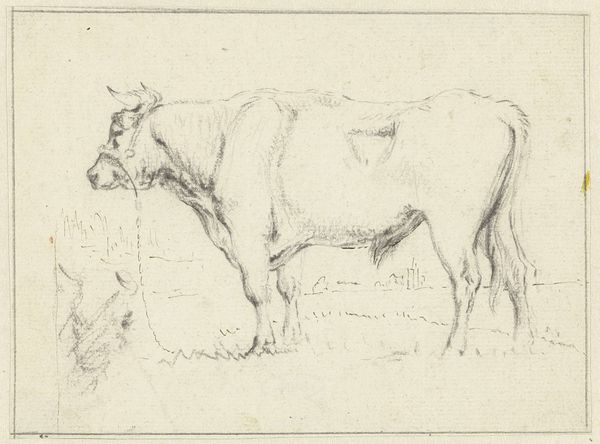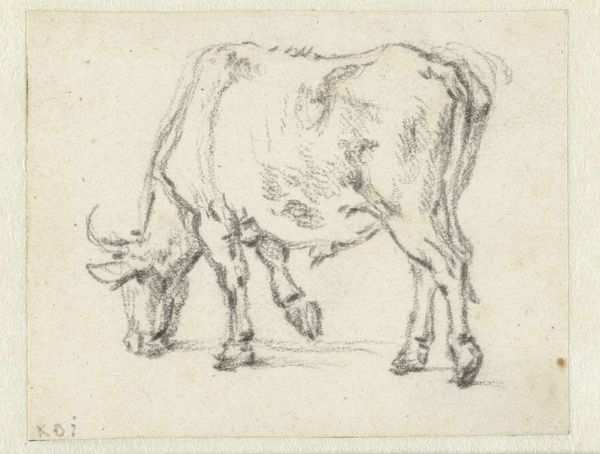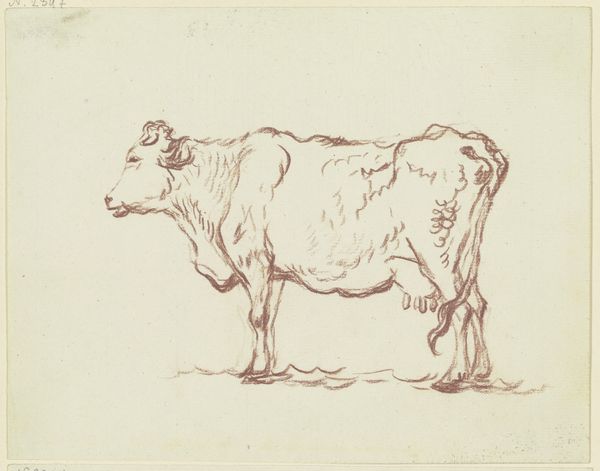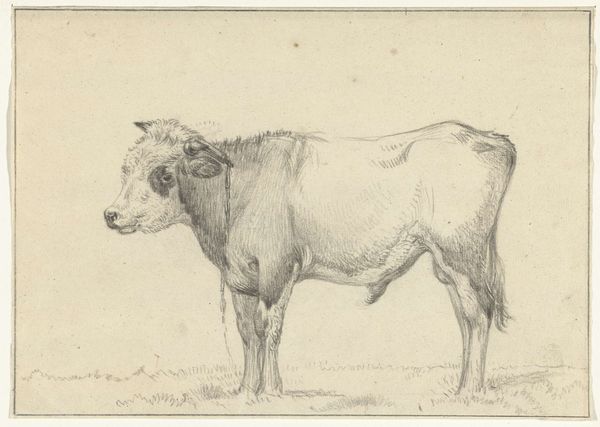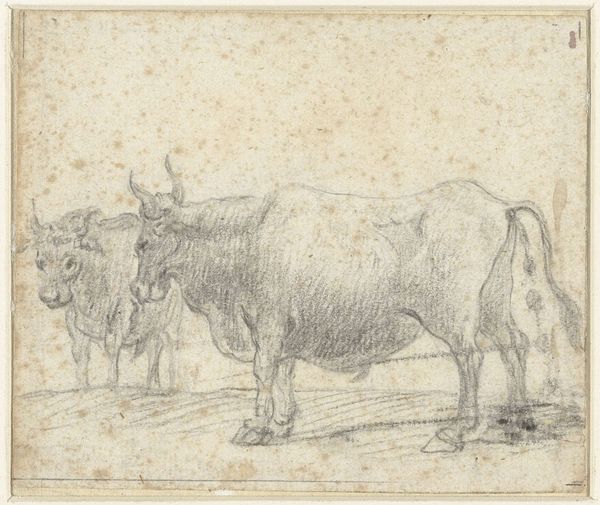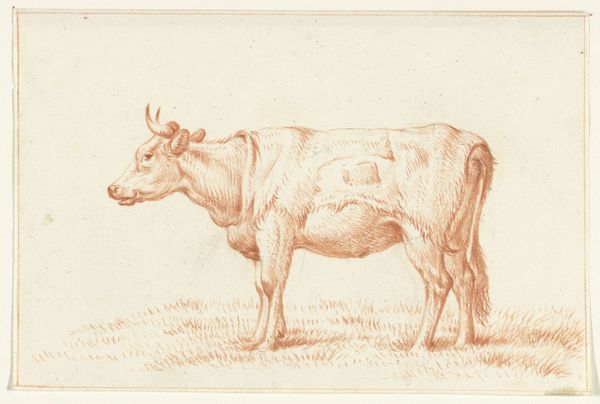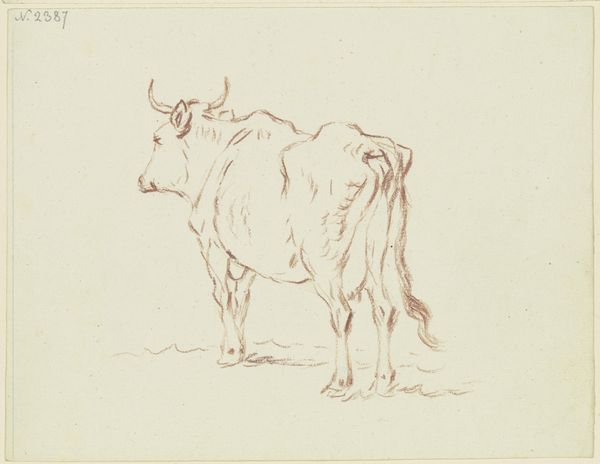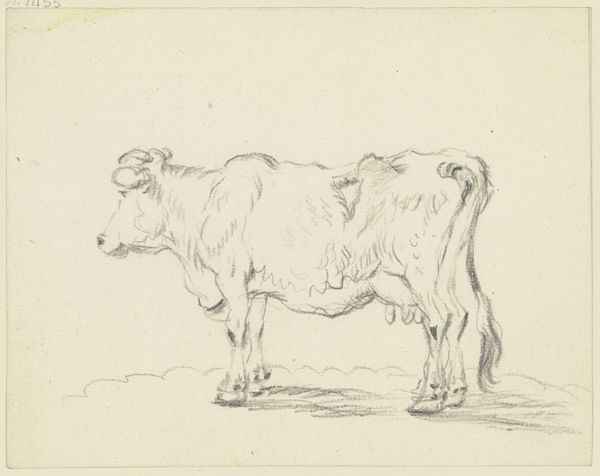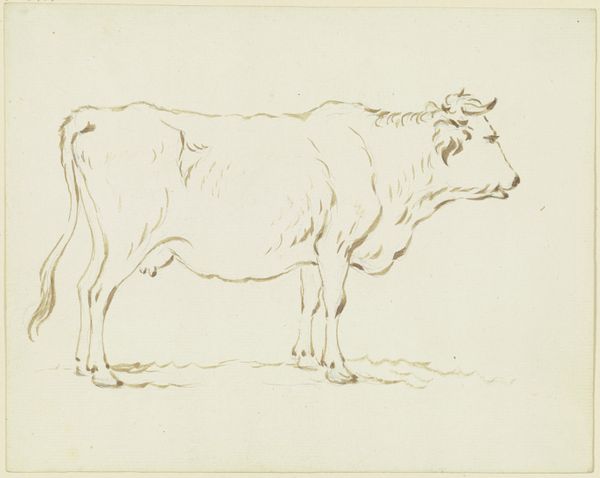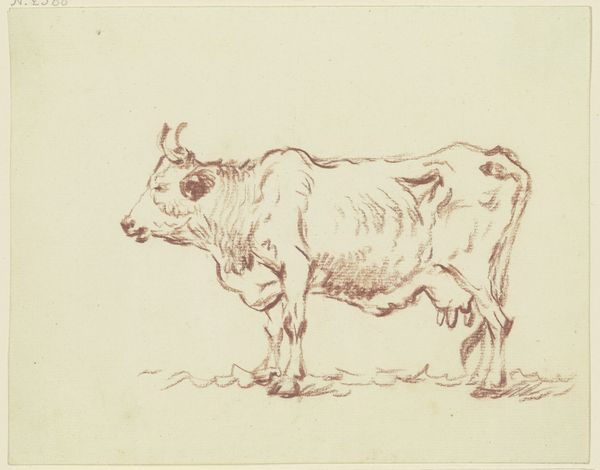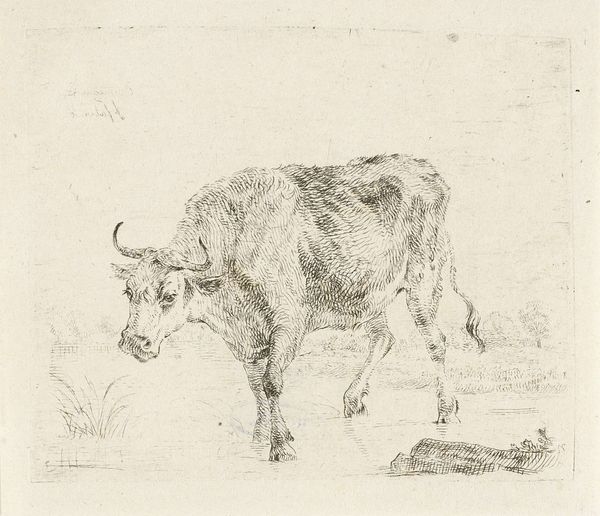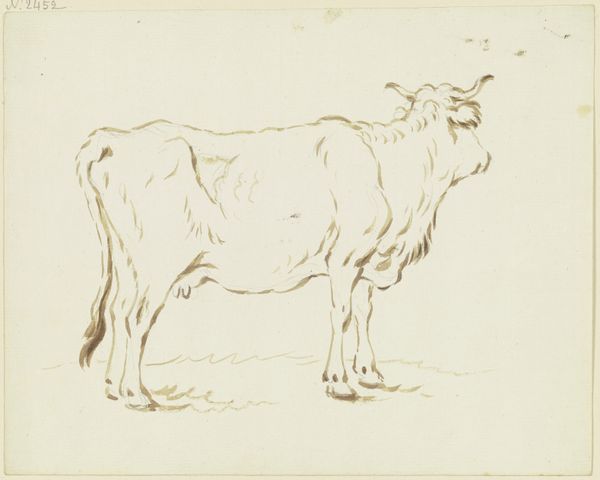
drawing, pencil
#
pencil drawn
#
drawing
#
pencil sketch
#
landscape
#
figuration
#
pencil drawing
#
pencil
#
sketchbook drawing
#
realism
Dimensions: height 134 mm, width 182 mm
Copyright: Rijks Museum: Open Domain
Curator: "Koe die gemolken wordt", or "Cow being milked", is the name Pieter Gerardus van Os gave this drawing sometime between 1786 and 1839. It's a humble pencil sketch. Editor: I must say, it possesses a certain raw charm, wouldn't you agree? The earthy palette and unrefined lines lend it an air of immediacy, a snapshot from daily rural life. Curator: Indeed. Note how the artist has captured the bulk of the cow. The cross-hatching describes the musculature. Also, observe the use of light. Van Os clearly understood form. Editor: And the societal implications shouldn't be ignored! Here, labor is on full display. This piece reveals a particular relationship, the worker subservient to the needs of the animal and its product, which in turn served an evolving commercial dairy industry in the Netherlands. Curator: But let’s return to the purely visual. Consider the composition: The cow is central, filling much of the space. Yet it is the figure of the milkmaid nestled against its flank which provides a grounding point. The soft lines direct your eye and communicate movement and warmth. Editor: Yet this simple image also carries heavy symbolism. It underscores the growing divide between burgeoning cities and the source of the agricultural wealth needed to sustain them. In Van Os’s time, such images served both a nostalgic and educational role. People increasingly saw such work as quaint and antiquated. Curator: Still, you have to admire the restraint, the elegant simplicity of line used to create such mass and presence. And see how, without flourish, he manages to evoke the texture of the cow's hide, and the soft, almost furtive action of milking? It's about more than a commentary on rural life. Editor: Precisely. What appears as a simple bucolic scene is in fact an artistic documentation of rapidly changing socio-economic structures in Dutch society and their influence on imagery and cultural value systems. Curator: So, it's a work of layered readings, presented through elegant economy. I find that profoundly satisfying. Editor: As do I. And perhaps it’s through works such as these, we see reflections of our past mirrored in lines and form.
Comments
No comments
Be the first to comment and join the conversation on the ultimate creative platform.
